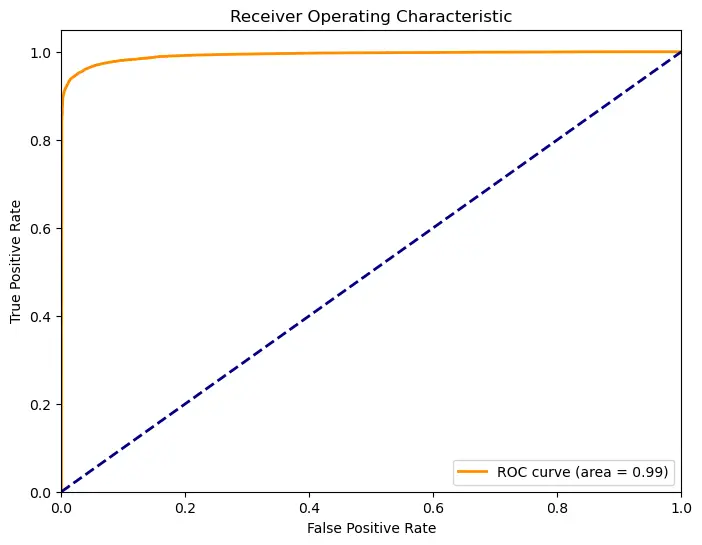逻辑回归
概述
逻辑回归和 softmax 回归都是用于分类问题的统计方法,属于广义线性模型的一部分。它们在本质上都是线性分类器,但应用于不同类型的分类问题。
逻辑回归
逻辑回归主要用于二分类问题。给定输入特征向量 x,逻辑回归模型通过以下方式估计输入属于某一类别的概率:
- 模型假设:使用线性组合 z=wTx+b,其中 w 是权重向量,b 是偏置。
- 激活函数:应用逻辑函数(sigmoid 函数)σ(z)=1+e−z1。
- 输出:模型输出的概率 P(y=1∣x)=σ(z)。
逻辑回归通过最大化似然估计来估计模型参数。
Softmax 回归
Softmax 回归,也称为多项逻辑回归,是逻辑回归的扩展,用于多分类问题(即类别数大于 2)。其处理方式如下:
- 模型假设:对于每一个类别 k,计算 zk=wkTx+bk。
- 激活函数:应用 softmax 函数,将输入转换为概率分布:
P(y=k∣x)=∑jezjezk
- 输出:通过 softmax 函数输出每个类别的概率。
与神经网络的关系
逻辑回归和 softmax 回归可以视为简单的神经网络:
- 逻辑回归相当于一个单一的神经元,使用 sigmoid 激活函数进行二分类。
- Softmax 回归相当于一个具有 softmax 激活函数的输出层,用于多分类。
在神经网络中,逻辑回归和 softmax 回归通常作为输出层使用:
- 逻辑回归常用作二分类神经网络的最后一层。
- Softmax 回归作为多分类神经网络的最后一层。
神经网络通过堆叠多个非线性层,可以学习复杂的特征表示,这使得它们比逻辑回归和 softmax 回归具有更强的表达能力和适应性。
应用与局限
应用:逻辑回归广泛用于医疗诊断、金融欺诈检测等二分类问题,其简单性和可解释性使其在很多实际应用中非常受欢迎。Softmax 回归常用于图像分类、文本分类等多分类问题,适用于类别数较多且相互排斥的场景。
局限:逻辑回归和 softmax 回归假设数据是线性可分的,因此在处理高度非线性的数据时表现不佳。它们对输入特征的质量十分敏感,需要良好的特征工程来提高性能,且难以捕捉复杂的特征之间的非线性关系,而神经网络可以通过多层结构克服这一局限。
在实践中,选择使用逻辑回归、softmax 回归还是更复杂的神经网络模型,通常取决于数据的具体特性、任务的复杂性以及计算资源的限制。
实践
介绍如何使用 PyTorch 构建一个简单的逻辑回归模型,以检测信用卡交易中的欺诈行为。此流程涵盖了数据加载、预处理、模型训练和评估等步骤。
数据集
使用 Kaggle 数据集 Credit Card Fraud Detection Dataset 2023,该数据集包含 2023 年欧洲持卡人的信用卡交易。该数据集包含超过 55 万条记录,为保护持卡人身份,数据已进行匿名化处理。该数据集的主要目的是促进欺诈检测算法和模型的开发,以识别潜在的欺诈交易。
导入库
导入所需的库,包括用于深度学习的 PyTorch,数据处理的 Pandas,数据可视化的 Seaborn 和 Matplotlib,以及用于数据预处理和评估的 Scikit-learn。
import os
import torch
from torch.utils.data import DataLoader, TensorDataset
import pandas as pd
import seaborn as sns
import matplotlib.pyplot as plt
from sklearn.model_selection import train_test_split
from sklearn.preprocessing import StandardScaler
from sklearn.metrics import confusion_matrix, precision_score, recall_score, f1_score检查 CUDA 的可用性,以利用 GPU 加速计算:
if torch.cuda.is_available():
print("CUDA is available! You can use GPU.")
print("Current GPU:", torch.cuda.get_device_name(0))
else:
print("CUDA is not available. You are using CPU.")加载数据
使用 Pandas 加载数据集,并显示前五行数据:
df = pd.read_csv('../kaggle/input/creditcard_2023.csv')
df.head(5)| id | V1 | V2 | V3 | V4 | V5 | V6 | V7 | V8 | V9 | ... | V21 | V22 | V23 | V24 | V25 | V26 | V27 | V28 | Amount | Class | |
|---|---|---|---|---|---|---|---|---|---|---|---|---|---|---|---|---|---|---|---|---|---|
| 0 | 0 | -0.260648 | -0.469648 | 2.496266 | -0.083724 | 0.129681 | 0.732898 | 0.519014 | -0.130006 | 0.727159 | ... | -0.110552 | 0.217606 | -0.134794 | 0.165959 | 0.126280 | -0.434824 | -0.081230 | -0.151045 | 17982.10 | 0 |
| 1 | 1 | 0.985100 | -0.356045 | 0.558056 | -0.429654 | 0.277140 | 0.428605 | 0.406466 | -0.133118 | 0.347452 | ... | -0.194936 | -0.605761 | 0.079469 | -0.577395 | 0.190090 | 0.296503 | -0.248052 | -0.064512 | 6531.37 | 0 |
| 2 | 2 | -0.260272 | -0.949385 | 1.728538 | -0.457986 | 0.074062 | 1.419481 | 0.743511 | -0.095576 | -0.261297 | ... | -0.005020 | 0.702906 | 0.945045 | -1.154666 | -0.605564 | -0.312895 | -0.300258 | -0.244718 | 2513.54 | 0 |
| 3 | 3 | -0.152152 | -0.508959 | 1.746840 | -1.090178 | 0.249486 | 1.143312 | 0.518269 | -0.065130 | -0.205698 | ... | -0.146927 | -0.038212 | -0.214048 | -1.893131 | 1.003963 | -0.515950 | -0.165316 | 0.048424 | 5384.44 | 0 |
| 4 | 4 | -0.206820 | -0.165280 | 1.527053 | -0.448293 | 0.106125 | 0.530549 | 0.658849 | -0.212660 | 1.049921 | ... | -0.106984 | 0.729727 | -0.161666 | 0.312561 | -0.414116 | 1.071126 | 0.023712 | 0.419117 | 14278.97 | 0 |
检查数据集的信息,确保其完整性:
df.info()输出
<class 'pandas.core.frame.DataFrame'>
RangeIndex: 568630 entries, 0 to 568629
Data columns (total 31 columns):
# Column Non-Null Count Dtype
--- ------ -------------- -----
0 id 568630 non-null int64
1 V1 568630 non-null float64
2 V2 568630 non-null float64
3 V3 568630 non-null float64
4 V4 568630 non-null float64
5 V5 568630 non-null float64
6 V6 568630 non-null float64
7 V7 568630 non-null float64
8 V8 568630 non-null float64
9 V9 568630 non-null float64
10 V10 568630 non-null float64
11 V11 568630 non-null float64
12 V12 568630 non-null float64
13 V13 568630 non-null float64
14 V14 568630 non-null float64
15 V15 568630 non-null float64
16 V16 568630 non-null float64
17 V17 568630 non-null float64
18 V18 568630 non-null float64
19 V19 568630 non-null float64
20 V20 568630 non-null float64
21 V21 568630 non-null float64
22 V22 568630 non-null float64
23 V23 568630 non-null float64
24 V24 568630 non-null float64
25 V25 568630 non-null float64
26 V26 568630 non-null float64
27 V27 568630 non-null float64
28 V28 568630 non-null float64
29 Amount 568630 non-null float64
30 Class 568630 non-null int64
dtypes: float64(29), int64(2)
memory usage: 134.5 MB查看目标变量 Class 的分布情况:
df["Class"].value_counts()输出
Class
0 284315
1 284315
Name: count, dtype: int64数据预处理
去除不需要的列并对数据进行标准化处理:
X = df.drop(['id','Class'], axis=1)
y = df.Class
sc = StandardScaler()
X_scaled = sc.fit_transform(X)将数据集划分为训练集和测试集:
X_train, X_test, y_train, y_test = train_test_split(X_scaled, y, test_size=0.2, random_state=42)构建和训练模型
定义逻辑回归模型并进行训练:
class LogisticRegression(torch.nn.Module):
def __init__(self, input_dim):
super(LogisticRegression, self).__init__()
self.linear = torch.nn.Linear(input_dim, 1)
def forward(self, x):
return torch.sigmoid(self.linear(x))
# 初始化模型
input_dim = X_train.shape[1]
model = LogisticRegression(input_dim)
# 定义损失函数和优化器
criterion = torch.nn.BCELoss()
optimizer = torch.optim.SGD(model.parameters(), lr=0.001)训练模型并输出每 10 个 epoch 的损失:
num_epochs = 100
for epoch in range(num_epochs):
for X_batch, y_batch in DataLoader(TensorDataset(torch.tensor(X_train, dtype=torch.float32), torch.tensor(y_train.values, dtype=torch.float32).unsqueeze(1)), batch_size=64, shuffle=True):
outputs = model(X_batch)
loss = criterion(outputs, y_batch)
optimizer.zero_grad()
loss.backward()
optimizer.step()
if (epoch+1) % 10 == 0:
print(f'Epoch [{epoch+1}/{num_epochs}], Loss: {loss.item():.4f}')输出
Epoch [10/100], Loss: 0.2015
Epoch [20/100], Loss: 0.1505
Epoch [30/100], Loss: 0.0612
Epoch [40/100], Loss: 0.1677
Epoch [50/100], Loss: 0.0866
Epoch [60/100], Loss: 0.0550
Epoch [70/100], Loss: 0.0663
Epoch [80/100], Loss: 0.0984
Epoch [90/100], Loss: 0.0452
Epoch [100/100], Loss: 0.0997模型评估
在测试集上进行评估,计算准确率、精确率、召回率和 F1 分数,并绘制混淆矩阵和 ROC 曲线:
# 在测试集上进行评估
with torch.no_grad():
y_pred = model(X_test_tensor)
y_pred_labels = (y_pred > 0.5).float()accuracy = (y_pred_labels.eq(y_test_tensor).sum() / y_test_tensor.shape[0]).item()
precision = precision_score(y_test_tensor, y_pred_labels)
recall = recall_score(y_test_tensor, y_pred_labels)
f1 = f1_score(y_test_tensor, y_pred_labels)
print(f'Accuracy: {accuracy * 100:.2f}%')
print(f'Precision: {precision:.2f}')
print(f'Recall: {recall:.2f}')
print(f'F1 Score: {f1:.2f}')输出
Accuracy: 96.17%
Precision: 0.98
Recall: 0.94
F1 Score: 0.96# 绘制混淆矩阵
cm = confusion_matrix(y_test_tensor, y_pred_labels)
plt.figure(figsize=(8, 6))
sns.heatmap(cm, annot=True, fmt="d", cmap="Blues",
xticklabels=["Predicted No Fraud", "Predicted Fraud"],
yticklabels=["Actual No Fraud", "Actual Fraud"])
plt.ylabel('Actual')
plt.xlabel('Predicted')
plt.title('Confusion Matrix')
plt.show()
# 计算ROC曲线和AUC值
fpr, tpr, thresholds = roc_curve(y_test_tensor, y_pred)
roc_auc = auc(fpr, tpr)
# 绘制ROC曲线
plt.figure(figsize=(8, 6))
plt.plot(fpr, tpr, color='darkorange', lw=2, label='ROC curve (area = %0.2f)' % roc_auc)
plt.plot([0, 1], [0, 1], color='navy', lw=2, linestyle='--')
plt.xlim([0.0, 1.0])
plt.ylim([0.0, 1.05])
plt.xlabel('False Positive Rate')
plt.ylabel('True Positive Rate')
plt.title('Receiver Operating Characteristic')
plt.legend(loc="lower right")
plt.show()
